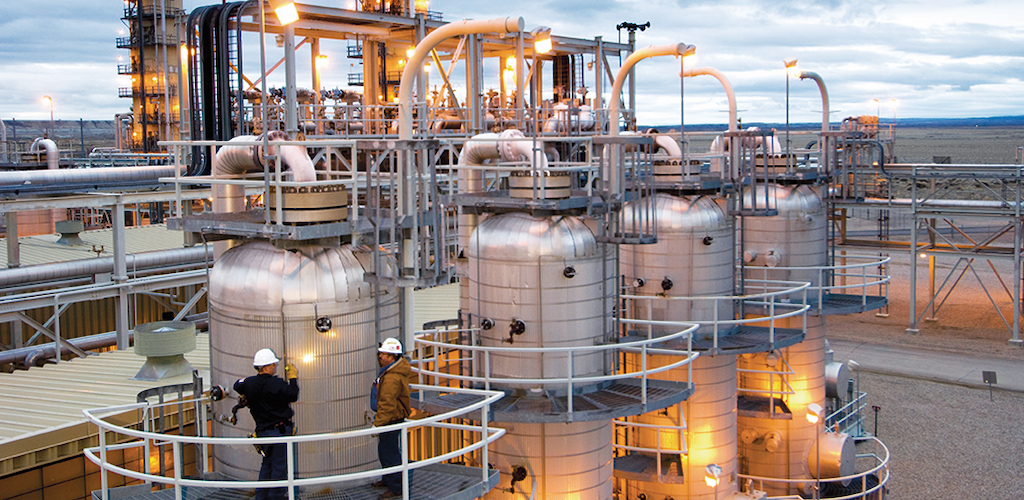Jul 15 | 2021
(Americas) Tax Credits Support Profitable Deployment

By Malcolm Ramsay
U.S. tax structures hold the potential to boost development of carbon capture, utilization and storage, or CCUS, infrastructure on the Gulf Coast, according to new findings published by researchers at The University of Texas at Austin.
The research suggests that federal tax credits could support companies in saving as much as US$60 million per year through the development of new facilities and networks to sequester carbon.
“At the high end of our estimates, CCUS could produce economic benefits of US$4.6 billion,” Assistant Professor Andrew Waxman, one of three authors of the study, told delegates at a briefing to launch the paper.
Quantified Benefits
Based on bottom-up engineering calculations, the report’s authors estimate the conditions for profitable development of CCUS, incorporating the total and marginal cost of constructing and operating new CCUS facilities and associated infrastructure.
Key to the economics of new developments is the expanded the U.S. Internal Revenue Code Section 45Q tax credit, which allows industrial manufacturers to claim subsidy for activities which can capture and sequester carbon from their operations. This legal structure allows operators to earn up to US$50 per tonne of CO2 stored permanently, or US$35 if the CO2 is utilized in further industrial activity such as enhanced oil recovery.
Long hailed as a possible solution to achieve climate goals, CCUS facilities have been proposed and prototyped based on a variety of technologies, the majority of which are underpinned by large-scale industrial components. The need for new pipelines, storage tanks, compressors, processing equipment and ship-handling facilities is essential for the rollout of CCUS at scale and likely to drive significant breakbulk activity. However a number of legal and political challenges have dogged the sector until now.
“The technology is there and the economics are in place to make this feasible for firms,” Waxman said. “We have had the technology in place close to 20 years, but getting the legal and liability institutions setup to make that happen remains challenging, considering the structure of current federal policy.”
The new report compares cost estimates to scheduled CCUS tax incentives through 2026 under section 45Q, providing a means to quantify the benefits of developing CCUS infrastructure.
Gulf Coast Opportunities
The report’s author suggest that Louisiana and Texas are well positioned to benefit from a boon in CCUS in development over the coming decade, due to a confluence of factors.
The region’s strength in the downstream sector and plethora of industrial clusters is seen as a major driver, with seven of the eight largest U.S. refineries and the vast majority of current and expected future U.S. liquefied natural gas export capacity are on the Texas and Louisiana Gulf Coast. Coupled with this the geology of the northwest Gulf Coast, it is suited to onshore and offshore sequestration and already has large-scale infrastructure suitable for CCUS facilities.
A final factor in favor of CCU development in the region is the 45Q tax credit regime, which is scheduled to ramp up significantly between now and 2030, coinciding with the expected expansion in regional industrial emissions.
ExxonMobil investment
Earlier this year, energy major ExxonMobil announced plans for a US$100 billion carbon capture program, centred around Houston and offshore saline reservoirs in the Gulf.
Guy Powell, vice president at ExxonMobil Low Carbon Solutions, estimates the total available capacity as “roughly 500 billion tons of storage capacity in the Gulf of Mexico, if you look at the region from New Orleans all the way down to Corpus Christi,” enough to sequester 100 million tonnes of CO2 per year.
The U.S. Department of Energy meanwhile estimates that the sea floor of the Gulf Coast region is able to safely store the entire CO2 output from the U.S. for the next 100 years.
"Houston is an ideal location for a major project. The plants along the heavily industrialized ship channel represent some of the hardest sectors to decarbonize. They're also relatively close together, providing project scale and reducing unit costs,” said Darren Woods, CEO of ExxonMobil.
The firm’s Low Carbon Solutions division was launched at the start of the year and is advancing plans for more than 20 new CCUS developments around the world.
Optimization Vital
While the development of CCUS infrastructure will invariably require significant breakbulk capacity, the University of Texas analysis suggests that the majority of the cost profile for new facilities will be in the capture process itself.
“Most of the cost of CCUS is in the capture. The pipeline network according to our bottom-up engineering estimates accounts for a small but non-negligible amount,” explained Benjamin D. Leibowicz, University of Texas assistant professor.
Despite this small cost factor, the impact of cost-efficient breakbulk handling is expected to be significant for many projects as break-even depends on a number of moving factors and long-term outlook for development is still uncertain.
“Optimizing for construction of the pipeline network and infrastructure can make the difference between whether a CCUS facility is profitable or not,” Leibowicz added. “There are several coordination failures that must be overcome in order to develop this infrastructure to the scale where it is economic and future projects can then proceed more easily.”
